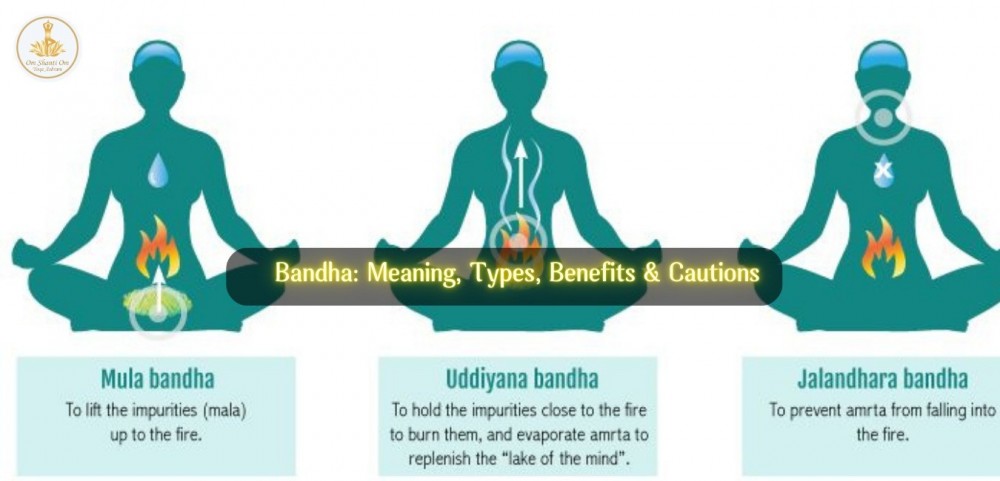Yoga, a timeless practice rooted in ancient Indian tradition, is far more than just physical postures or breathing exercises. It is a holistic system that integrates the body, mind, and spirit. Among its many profound techniques, bandhas in yoga are often overlooked, yet they play a vital role in unlocking the body’s energy system and deepening one’s practice. This article will dive deep into what bandhas are, their significance, types, benefits, and how to practice them safely.
What Are Bandhas in Yoga?
The word bandha is derived from Sanskrit, meaning "lock," "hold," or "tighten." In the context of yoga, bandhas are energy locks that help control the flow of prana (life force) within the body. When used correctly, bandhas in yoga create a powerful internal engagement that can redirect energy, awaken dormant energy centers, and support both physical and mental stillness during meditation and asana (posture) practice.
By applying a bandha, a practitioner "locks" certain muscles, usually during breath retention, to guide the energy flow upward through the central energy channel (sushumna nadi), rather than allowing it to dissipate outward.
The Four Main Bandhas in Yoga
There are three primary bandhas and one combination of all three, known as Maha Bandha or the "great lock." Here's a detailed look at each:
1. Mula Bandha (Root Lock)
-
Location: Pelvic floor muscles (between the anus and genitals).
-
Activation: Slight contraction of the perineum muscles.
-
Purpose: Redirects energy upward from the base chakra (Muladhara), grounds the body, and strengthens the pelvic floor.
-
Benefits: Supports spine alignment, enhances concentration, and aids in controlling sexual energy.
2. Uddiyana Bandha (Abdominal Lock)
-
Location: Lower abdomen (just above the navel).
-
Activation: Draw the belly inward and upward under the rib cage after exhalation.
-
Purpose: Stimulates digestion, massages internal organs, and helps move energy upward through the body.
-
Benefits: Tones abdominal muscles, improves digestion, boosts energy, and enhances pranayama.
3. Jalandhara Bandha (Throat Lock)
-
Location: Throat area.
-
Activation: Lower the chin toward the chest while lifting the sternum, creating a "lock" at the throat.
-
Purpose: Regulates blood flow and energy to the brain and upper chakras.
-
Benefits: Calms the mind, balances thyroid function, and protects the brain during advanced breath retention.
4. Maha Bandha (The Great Lock)
-
Definition: The simultaneous application of all three bandhas.
-
Purpose: Harnesses the full power of energy control in yoga, channeling it inward for transformation.
-
Benefits: Enhances spiritual awakening, strengthens the nervous system, and deepens meditation.
Why Are Bandhas in Yoga So Important?
The subtle body, according to yogic philosophy, contains energy centers (chakras) and pathways (nadis). Without control, prana can scatter, leading to mental restlessness, physical imbalance, or emotional instability.
Bandhas in yoga act as gates that direct and preserve this energy. They prevent leakage of prana, strengthen internal awareness, and make the body a vessel for higher consciousness. They are particularly useful in pranayama (breath control), meditation, and advanced asana practice.
How to Safely Practice Bandhas
Practicing bandhas in yoga requires a balance of awareness, technique, and breath control. Here are some safety tips:
-
Start slow: Begin with Mula Bandha, as it's the easiest and safest to practice.
-
Practice on an empty stomach: This prevents discomfort, especially for Uddiyana Bandha.
-
Use proper breath control: Most bandhas are engaged during breath retention (kumbhaka).
-
Work with a teacher: Especially for Uddiyana and Maha Bandha, it’s best to learn under expert guidance.
-
Avoid if pregnant or have medical conditions: People with high blood pressure, heart issues, or pregnancy should avoid intense bandha practices.
Bandhas in Yoga Asana and Pranayama
Incorporating bandhas in yoga postures (asanas) adds stability, energy control, and internal focus. For instance:
-
In Downward Dog (Adho Mukha Svanasana), engaging Mula Bandha helps stabilize the core.
-
In seated meditation, Jalandhara Bandha facilitates mental stillness and enhances breath control.
-
During Kapalabhati or Bhastrika pranayama, Uddiyana Bandha amplifies the cleansing effects.
Advanced practitioners often hold bandhas during breath retention to stimulate spiritual awakening or access deeper meditative states.
Spiritual Significance of Bandhas in Yoga
Beyond the physical and energetic, bandhas in yoga are deeply connected to spiritual evolution. They help awaken Kundalini energy, the dormant potential at the base of the spine. Through regular, mindful bandha practice, practitioners may experience:
-
Increased inner peace and emotional clarity.
-
Heightened intuition and creativity.
-
Deep spiritual insights during meditation.
In classical texts like the Hatha Yoga Pradipika and Gheranda Samhita, bandhas are described as essential tools for serious yogis on the path of self-realization.
Conclusion
Mastering the bandhas in yoga is like discovering a secret key to your inner energy vault. Though subtle and often invisible, their impact on physical health, mental clarity, and spiritual depth is profound. Whether you're a beginner or an advanced yogi, learning and applying the bandhas can transform your practice from the inside out.
As with all powerful tools, the bandhas require patience, guidance, and consistent practice. But once understood, they can become the foundation of a deeper, more fulfilling yogic journey.













